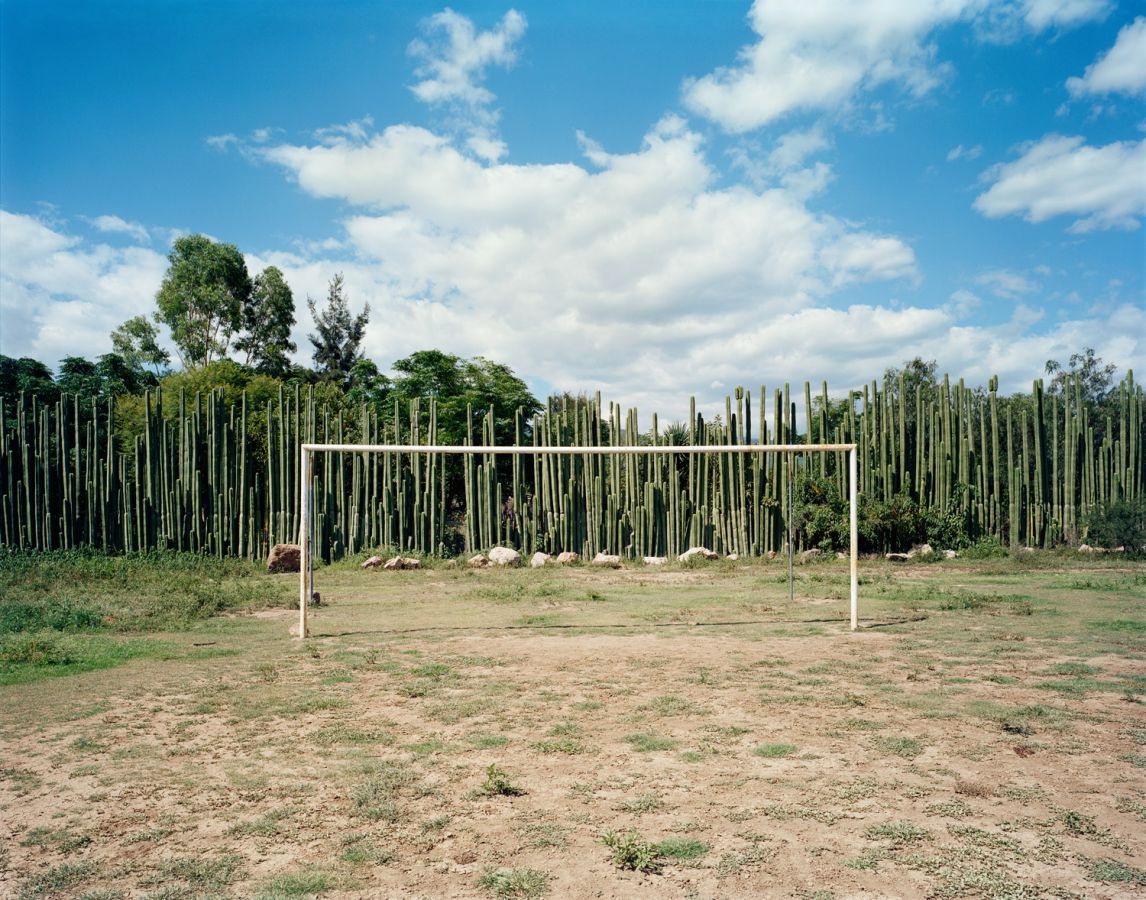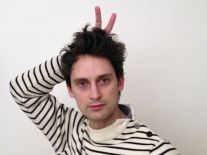Les orgues de Teitipac, Amour et gibelotte, and your roosters are all pictures made in Mexico, where you lived - in Mexico City - for several years. What was its influence on your practice and culture of the image?
It’s
true that Mexico City can strike an untrained eye as uncanny. It’s a
fantastic laboratory of forms and signs, which indeed exerted an
influence on me, quickly and decisively. English anthropologist Edward
B. Tylor reflected with some degree of amazement and disbelief (in his
travel journal Anahuac) on the incessant, sometimes irrational clash of
situations or singularities. This is equally aptly identified in Le
Clézio’s The Mexican Dream, which describes the uncommon clash or
massive collision between a magical civilization (the Aztecs) and
European civilization of the Renaissance. Perhaps this seismic land is a
place where, here or there, you can still shake a little from the
aftershock…
Who are these roosters?They are fighting cocks: roosters bred and conditioned for maximum aggressiveness and combativeness.
Obviously,
such roosters are likely to trigger plenty of questions about the
animal kingdom, the relationship between nature and culture, all heavily
featured in the arts… or, to jump from one idea to the other, about
animals in the making. Like so many approaches made possible by what
photography shows.
They are also symbolic roosters – how could things
be otherwise? Such a "solar" bird is in essence universal. In addition
to its character – proud and vain –, it is known in various civilisations or
cultures to herald sunrise, the victory of light over
darkness. They are stimulus-roosters, pretext-roosters,
precious-roosters, ornament-roosters, bait-roosters.
What shooting methodology did you follow to create this gallery of portraits?I
set up my shooting studio in various locations: ranches, fairs,
azoteas… In each of these locations, I used the same grey cyclorama with
flashes placed at 45°, a little like the setup for a photo booth or a
copy stand – a standardised and mechanical device. Except that here, an
assistant poked each rooster’s head through a hole in the backcloth
small enough to “hide” the trick with feathers. After a brief cosmetic
preparation (a quick combing, a bit of oil on the skin), I photographed
them front and/or profile, in the manner of Bertillon’s anthropometry.
Why did you choose to isolate them from their context and just shoot their head against a grey background?The
grey background trick is a form of mise en abyme of the photographic
process. While the cyclorama clearly delimits the photographic space, I
was also eager for this form of decapitation to amputate the
photographic image (possibly from the pathos often associated with the
subject). It was a case of “come forward, look, in silence”; I should
also explain that I envisaged this work from a very visual angle, and
that there’s a big difference between seeing it published, exhibited or
hung on a wall. To stand there opposite a rooster’s head, aggressive,
colourful, and made all the more defiant by its size, elicits a
disturbing physical reaction.
In a way, this work slides from a
photographic image to a more streamlined, symbolic and ornamental
depiction, revealing its weapons of seduction.
Limited edition, numbered and signed.

 “Does it make sense to want to return to the world’s most polluted city?” Mexican writer Juan Villoro wondered after a three-year stay in Germany. Likewise, you could ask why Erwan Fichou, a Breton brought up in the great outdoors, would want to go back to the cauldron of Mexico City? Perhaps because it remains, seventy years after André Breton visited, “the world capital of surrealism”. Sprawling, insane, contradictory, messy, impatient, permanently ruled by chance and accident, Mexico City was a decisive discovery for Erwan Fichou. He took pictures of fighting cocks and their spurs. Back in France, he photographed dogs and their masters, dressed in coats or cardigans painstakingly knitted from lovingly-collected dog hair. And also the pimped-up rides of car tuning fans, and hopeful metal detector-toting treasure hunters. What Erwan Fichou is quietly assembling is a compendium - manifestations of ordinary madness, as expressed in the more marginal forms of popular culture – like so many dissonant notes on a path towards generic blandness.
“Does it make sense to want to return to the world’s most polluted city?” Mexican writer Juan Villoro wondered after a three-year stay in Germany. Likewise, you could ask why Erwan Fichou, a Breton brought up in the great outdoors, would want to go back to the cauldron of Mexico City? Perhaps because it remains, seventy years after André Breton visited, “the world capital of surrealism”. Sprawling, insane, contradictory, messy, impatient, permanently ruled by chance and accident, Mexico City was a decisive discovery for Erwan Fichou. He took pictures of fighting cocks and their spurs. Back in France, he photographed dogs and their masters, dressed in coats or cardigans painstakingly knitted from lovingly-collected dog hair. And also the pimped-up rides of car tuning fans, and hopeful metal detector-toting treasure hunters. What Erwan Fichou is quietly assembling is a compendium - manifestations of ordinary madness, as expressed in the more marginal forms of popular culture – like so many dissonant notes on a path towards generic blandness. 